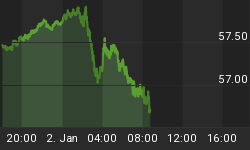I.
According to Topline Investment Graphics: "The Market Technicians Association gave Edwin Sedgewick Coppock its annual award for a lifetime of achievement in technical analysis in 1989. He published the formula for the Coppock Curve (or Coppock Guide) in Barron's in 1962. He applied a front-weighted smoothing to an average of two momentums to produce an oscillator that was designed to identify significant bottoms in the stock market. It has proven to be remarkably resistant to whipsaws." At its website, Topline Investment Graphics describes briefly how the Coppock Curve is used.
II.
The Coppock Curve is a monthly indicator which can be applied to various markets. For example, we can apply it to the Dow Jones Industrial Average.
To calculate the Monthly DJIA Coppock Curve all we need is the DJIA time series and a spreadsheet. Let's assume we have calculated the Monthly DJIA Coppock Curve for a few years. Let's assume further that the 100th month in the time series has just ended and now we want to calculate the Coppock Curve value for that month.
Here is the formula in plain English:
Step 1. We calculate the percentage change in the DJIA from Month 86 to Month 100 (from last close to last close).
Step 2. We calculate the percentage change in the DJIA from Month 89 to Month 100 (from last close to last close).
Step 3. We add the two percentages. We then keep this sum (and the 9 sums we previously obtained in the same way for the preceding 9 months) ready for weighting.
Step 4. Consider the weights 1, 2, 3, 4, 5, 6, 7, 8, 9, and 10. Using multiplication, we assign these 10 weights respectively to the sums we attained in Step 3 for each month from Month 91 through Month 100. Month 91 will have a weight of 1. Month 100 will have a weight of 10. We then combine all 10 weighted sums in order to arrive at a weighted total.
Step 5. We multiply by 10 the weighted total obtained in Step 4. This gives us the Monthly DJIA Coppock Curve value for Month 100.
III.
The chart below shows the Monthly DJIA Coppock Curve since 1960. The dashed red line is the zero line. Coppock's own buy signals take place when the curve turns up from any value below the zero line. However, my particular chart is not meant to point out Coppock's own Coppock Curve buy signals. Instead it focuses on those instances where the curve turns up at least 10 points from below -125 (the dashed blue line) which is deep territory. Even deeper, below -250, lies very deep territory (the dashed green line). Thus, this chart shows the 7 deep buy signals and the 1 very deep buy signal since 1960.

















